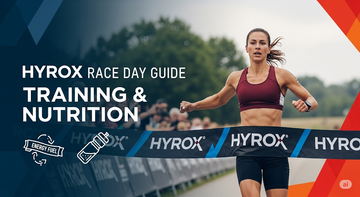Discover the ultimate guide to mastering the Zottman Curl, a dynamic exercise designed to sculpt your biceps and forearms like never before. In this comprehensive article, we delve into the history, technique, and unparalleled benefits of the Zottman Curl, a workout staple for anyone serious about arm development. Get ready to transform your approach to biceps and forearms training with this detailed exploration.
TL;DR The Zottman Curl, a unique blend of supinated and pronated grips, offers a full-scale workout for your biceps and forearms. It combines the muscle-building efficiency of standard curls with the forearm targeting of reverse curls. Ideal for those seeking a comprehensive arm workout, the Zottman Curl is a must-try for effective muscle growth and strength.
Table Of Contents
- Zottman Curl Key Highlights
- The Zottman Curl’s History
- A Step-By-Step Guide Of The Zottman Curl
- The Zottman Curl's Anatomy
- The Zottman Curl's Greatest Advantages
- Why Negative Reps Are Beneficial To Forearm Growth
- How Much Weight To Use When Doing The Zottman Curls?
- Curl Finisher With Supinated Zottman Curl
- Alternate Zottman Curls As An Exercise Variation
- The Sample Zottman Curl Biceps Workout
- Supplements To Boost Your Biceps/Forearms Workout
Fire up your biceps and forearms with the Zottman Curl, a one-of-a-kind exercise.
Zottman Curl Key Highlights
Zottman Curl stands out as an excellent dumbbell exercise that uniquely works for both the biceps and the forearm muscles. Its distinct movement pattern - curling up with a supinated grip and lowering with a pronated grip - makes it a comprehensive arm exercise.

The Zottman Curl’s History
The Zottman Curl, dating back to the era of strongman George Zottman in the late 1800s, remains relevant in modern fitness routines. Zottman's remarkable arm size and strength legacy continue through this exercise, highlighting its effectiveness in building muscular arms.
A Step-By-Step Guide Of The Zottman Curl
- Preparation: Stand with feet shoulder-width apart, holding dumbbells with palms facing up.
- Curl Up: Engage your biceps to curl the weights upwards.
- Grip Switch: At the curl's peak, rotate your wrists so palms face downwards.
- Lowering Phase: Lower the dumbbells in this pronated position, focusing on the forearm muscles.
- Repetition: Rotate your wrists back to the starting position and continue for the desired number of reps.
The Zottman Curl's Anatomy
The Zottman Curl targets three main muscles: the biceps brachii, brachialis, and brachioradialis.
The biceps brachii is the primary muscle involved on each rep’s positive portion (supinated forearms). The brachialis and brachioradialis take the brunt of the load on the negative (pronated forearms).
The Zottman Curl's Greatest Advantages
Zottman Curls, as previously said, are excellent for improving both the biceps and forearms. The movement works your biceps in a similar manner to a typical dumbbell twist, with the forearms in a supinated posture (palms forward/up) the whole time.
The Zottman Curl is best known for its negative portion, which focuses on the forearms. But it’s not only your forearms that are targeted. They’re also overloaded to a greater degree than in standard reverse curls, where the forearms are still pronated.
The explanation for this is simple: curling with your forearms supinated is a more biomechanically advantageous posture. As a result, you will still use more weight on regular curls than reverse curls. Supinated curls on the way up lets you use more weight than you will for reverse curls, leading to a stronger negative rep and more significant forearm overload for the Zottman Curl.
The Zottman Curl is more of a forearm-focused exercise. On the good portion of the rep, you still get the same biceps overload on a regular dumbbell curl.
Such an unprecedented move. It's all about the biceps on the way up. On the way down, you will strongly hit your forearms. Of course, the forearms and biceps are involved on the positive, but to a lesser extent.
Why Negative Reps Are Beneficial To Forearm Growth
On Zottman Curls, don't presume that the biceps have more work than the forearms simply because they get the positive portion of each rep. The negative portion of the rep delivers a great shock to your muscles that is incredibly beneficial for becoming more prominent and robust as the weight is lowered under complete pressure.
Most people ignore the rep’s eccentric (negative) part, assuming that the muscle only works when the weight is lifted, not when it is lowered. This is not true. The ability to resist the weight on the downside is a crucial feature of strength, and it's the part of the exercise that's most closely linked to muscle soreness in the days after a workout. If the muscles get a complete recovery by diet and rest, the soreness will gradually turn to increased size and strength.
How Much Weight To Use When Doing The Zottman Curls?
Select dumbbells that challenge your muscles while allowing you to complete 10-15 reps with proper form. The weight should be manageable yet effective, particularly during the pronated lowering phase.
Curl Finisher With Supinated Zottman Curl
Finishing the Zottman Curls with regular curls is a perfect way to maximize volume on a given range. What is the reason for this? As previously said, the negative portion of a Zottman Curl rep is thicker than your forearms are used to on reverse curls. As a consequence, your muscles can get fatigued and subsequently give out.
If this occurs, don't stop the set. Instead, finish it with traditional dumbbell curls without pronating the forearms or wrists at the end of the rep. You will get a few more reps by doing the negatives in the supinated position. When you do this, you're actually working to exhaustion, increasing speed and resulting in more muscle and momentum.
For example, if you can't lower the negative under control after ten reps of Zottman Curls, turn to standard curls in the middle of the set and do 2-3 more reps.
Alternate Zottman Curls As An Exercise Variation
I usually recommend doing Zottman Curls with both arms at the same time, but you can do them one arm at a time and work on each component separately. Alternate arms every other rep if you go this way, much as you can for alternating dumbbell curls.
Curl the right arm up with the forearm supinated (palm facing forward), pronate the forearm at the tip, lower the negative under control, and repeat with the left arm. That counts as one rep.
The Sample Zottman Curl Biceps Workout
You can add Zottman Curls to your arm workout in two ways: after your biceps workout or as a transition exercise from biceps to forearms.
A classic “transition” exercise is the Zottman Curl. It's a biceps and forearm move at the same time. If you're just working your biceps and not your forearms, finish with Zottman Curls to get a little forearm stimulus while still pounding your biceps hard. Do Zottman Curls after your last actual biceps movement and before the first isolated forearm motion if you're doing both biceps and forearms (one after the other).
A biceps/forearms routine using the Zottman Curl as a "bridge" exercise is seen below:
|
Exercise |
Sets |
Reps |
|
Barbell Curl |
3 |
8-10 |
|
Incline Dumbbell Curl |
3 |
6-8* |
|
EZ-Bar Preacher Curl |
3 |
10-12** |
|
Zottman Curl |
3 |
8-10*** |
|
Reverse Curl |
2 |
10-12 |
|
Seated Dumbbell Wrist Curl |
2 |
15** |
* *On the last set, take 1-2 rest-pauses.
**On the last set, do 1-2 drop sets.
***After hitting failure on the last set, switch to regular supinated curls before you hit failure again.
Advanced Tips and Techniques for the Zottman Curl
- Mind-Muscle Connection: Focus on the muscles being worked during each phase of the curl for maximum benefit.
- Tempo Variation: Experiment with different lifting and lowering speeds to challenge your muscles differently.
- Progressive Overload: Gradually increase the weight or reps over time to continuously challenge your muscles.
Supplements To Boost Your Biceps/Forearms Workout
Apart from taking the Zottman Curl, using some high-quality supplements may provide excellent support. Here are some products that you can consider buying at Ultimate Sup Singapore - the reliable one-stop supplement store.
MuscleTech Platinum 100% Creatine

Platinum 100% Creatine serves as a phosphate donor reservoir for your hard-working muscles, helping you to exercise harder for longer. That leads to significant increases in size and power that won't go unnoticed.
According to a 10-day study performed at Ohio State University on 31 weight-trained research subjects randomly assigned to one of three groups, subjects having the same type of creatine present in Platinum 100% Creatine with an appropriate training regimen improved their bench press strength potential by 18.6 percent compared to baseline (6,658 vs. 5,613 joules). Seventy percent of the subjects' 1-rep max bench press was used in the testing. (1)
MuscleTech Muscle Builder

Each serving of MuscleTech Muscle Builder provides 400mg of adenosine 5′-triphosphate disodium (PEAK ATP) for enhanced muscle strength and performance. PEAK ATP is a powerful and unique ingredient that provides the maximum muscle pumps you'll ever feel and actual power and muscle gains.
In a 12-week science study at the University of Tampa, the test subjects gained 8.8 lbs of lean muscle than the placebo group, which gained just 4.6 lbs with 90%. In another part of the same study, people who experienced PEAK ATP had a 96% increase in muscle thickness compared to the placebo group. The same subjects get a 147% more strength increase than the placebo group.
Dymatize All 9 Amino

Effective lean muscle growth requires all nine essential amino acids (EAAs). Ensuring your diet which contains all nine EAAs can be difficult, so Dymatize has developed All 9 Amino - the most complete amino acid powder blend for optimal muscle protein synthesis and training recovery assistance.
Dymatize All 9 Amino contains 10g of EAAs, including 7.2g of BCA. The product is considered the best quality product available today, helping muscles recover quickly and increasing the ability to absorb protein significantly. Such a spectacular supplement for the most professional users!
MusclePharm BCAA

A complex branched-chain amino acid in the 3: 1: 2 BCAA MusclePharm not only delivers the BCAA amount but also gives you exactly what your body needs. With the ideal combination of l-leucine (3 grams per serving), l-valine (2 grams), and l-isoleucine (1 gram), you will receive all the benefits of BCAAs before and after training. It is the perfect combination of BCAAs to reduce muscle loss, promote muscle growth, increase thin people’s weight, and even assist with fat loss.
Leucine is an essential amino acid content to build muscle growth. It also stimulates muscle protein synthesis and slows down muscle catabolism after stressful exercise. Besides, there is one gram of isoleucine in the product. This glycogenic amino acid produces glucose, which fuels your body to burn energy. Like leucine and isoleucine, two grams of valine promote protein synthesis and muscle tissue growth while providing power from glucose production. It acts as a facilitator for the normal development of other tissues in the body, too.
Conclusion
The Zottman Curl stands out as a game-changer in arm workouts, targeting both biceps and forearms for maximum impact. Whether you're a fitness enthusiast or a professional athlete, incorporating this exercise into your routine is essential for well-rounded arm development. Ready to take your arm workouts to the next level? Explore the best supplements to complement your training in our article, EAA vs BCAA - Best EAA Supplement In Singapore at Ultimate Sup. Click here to read more and elevate your fitness journey today!










